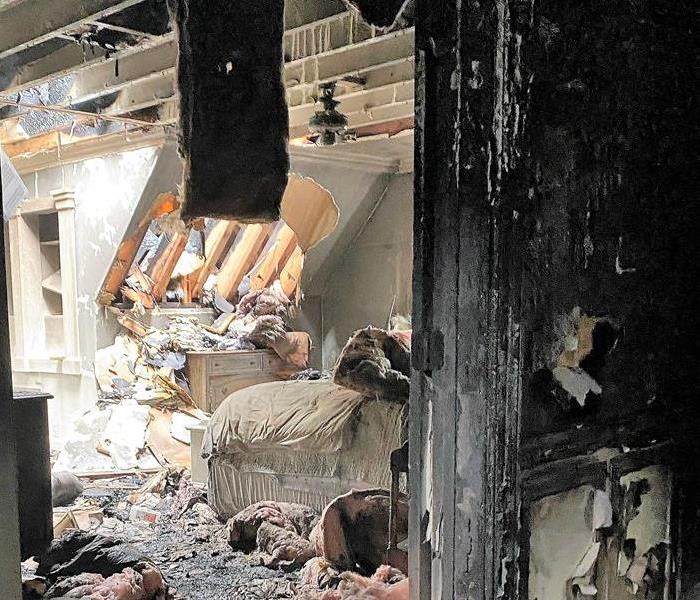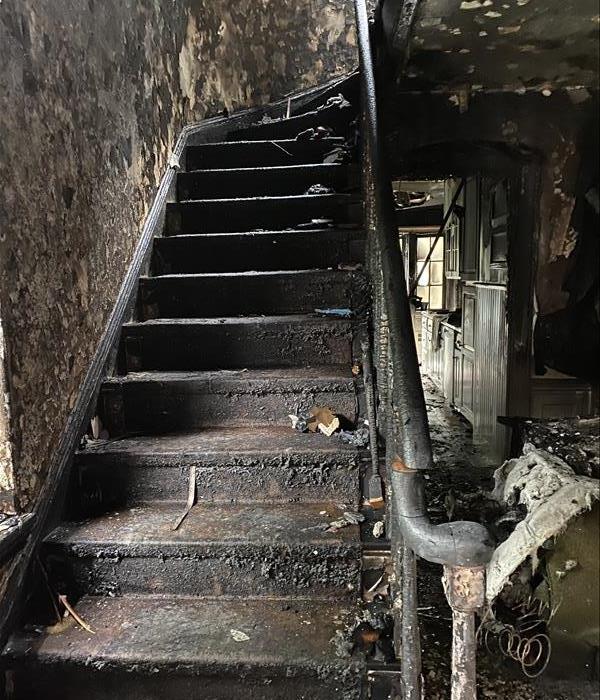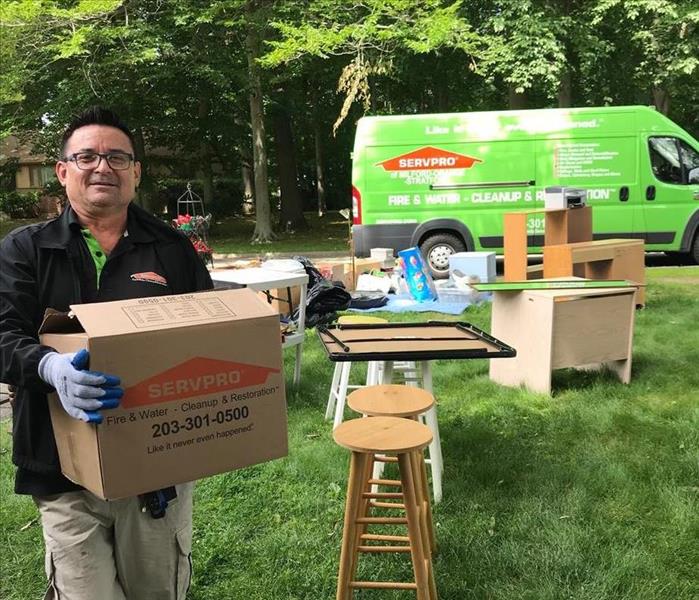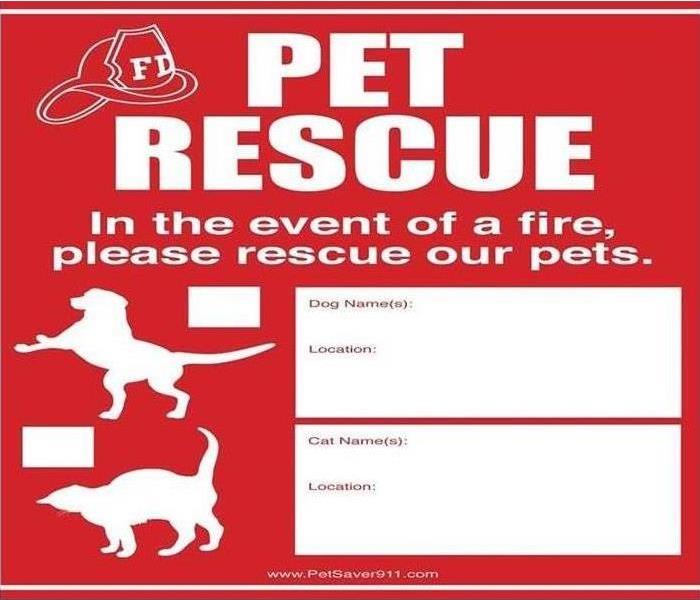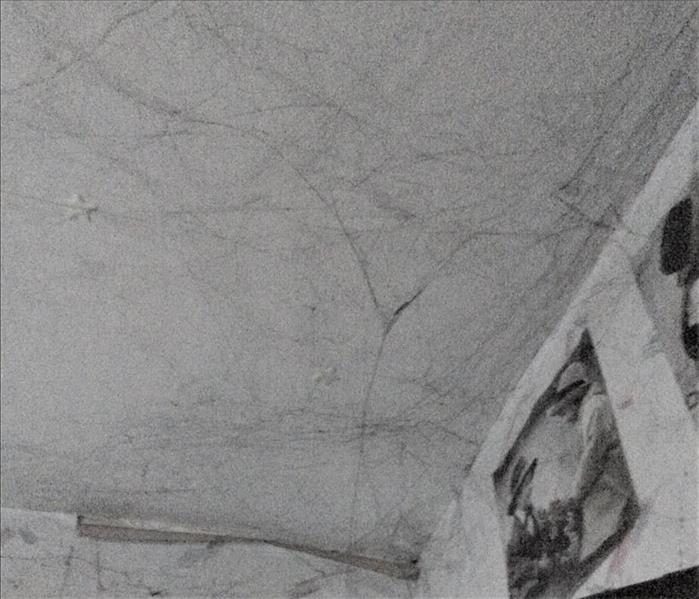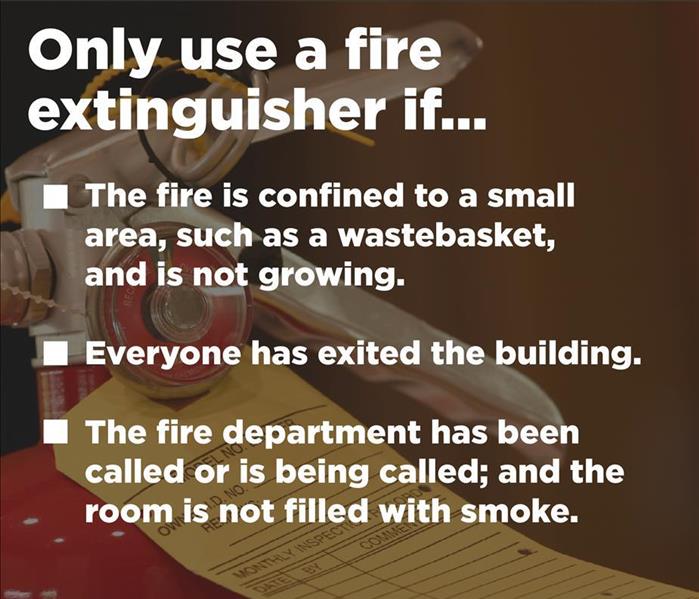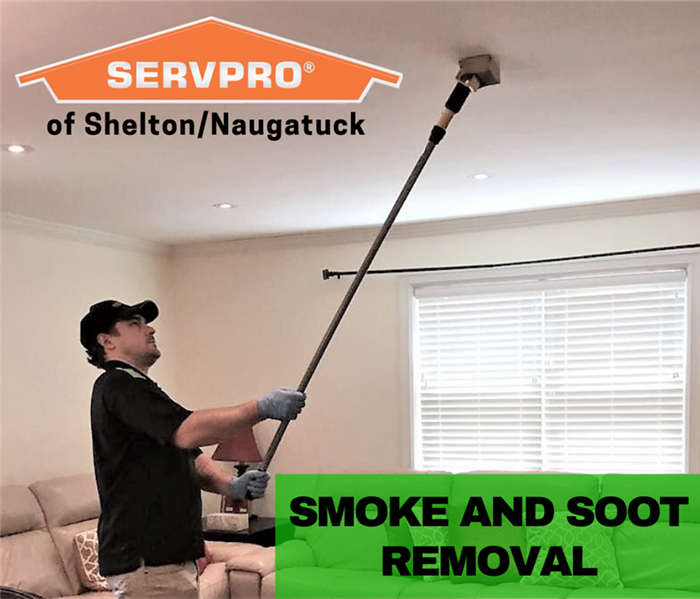Recent Fire Damage Posts
Rising from the Ashes: SERVPRO of Shelton, Naugatuck's Compassionate Approach to Fire Damage Restoration
5/20/2024 (Permalink)
In the aftermath of a fire, the devastation can be overwhelming. Beyond the charred remains lie memories, possessions, and a sense of security upended. But amidst the chaos, there's hope – hope in the form of our fire damage restoration services. In this blog post, we'll explore how our expertise, dedication, and compassion help homeowners navigate the challenging journey of fire damage recovery.
Assessment and Planning:
The journey to recovery begins with a comprehensive assessment of the fire damage. Our trained technicians meticulously inspect the property, identifying areas of structural damage, smoke residue, and water damage from firefighting efforts. With this information in hand, we develop a customized restoration plan tailored to the specific needs of each homeowner.
Smoke and Soot Removal:
One of the most challenging aspects of fire damage restoration is the removal of smoke and soot residues. These microscopic particles can penetrate deep into building materials, leaving behind foul odors and unsightly stains. We employ advanced techniques and equipment to effectively remove smoke and soot from surfaces, ensuring a thorough cleanup and eliminating lingering odors.
Water Damage Mitigation:
In many fire damage scenarios, water damage is also a significant concern due to the water used to extinguish the flames. Our team is equipped to handle water extraction, drying, and dehumidification to prevent further damage and mold growth. Our goal is to restore the property to its pre-fire condition as quickly and efficiently as possible, minimizing downtime and disruption for homeowners.
Structural Repairs and Reconstruction:
Once the immediate threats have been addressed, our team turns its attention to structural repairs and reconstruction. Our skilled technicians work tirelessly to rebuild damaged areas, from repairing walls and roofs to replacing flooring and cabinetry. With a meticulous attention to detail and a commitment to quality craftsmanship, we restore properties to their former glory.
Support and Compassion:
Throughout the fire damage restoration process, we provides more than just technical expertise – we offer support and compassion to homeowners in their time of need. We understand the emotional toll that a fire can take, and we're here to guide homeowners through every step of the recovery process.
When fire strikes, our franchise is here to help homeowners rise from the ashes. With our comprehensive fire damage restoration services, we mitigate damage, restore properties, and bring peace of mind to homeowners in their time of need. If you've experienced a fire, don't despair – let us be your partner in rebuilding and renewal. Together, we'll navigate the challenges of fire damage recovery and emerge stronger on the other side.
Smoke, Soot and Odor Removal After House Fires
8/2/2022 (Permalink)
Not only can the flames of a fire cause enormous damage, the ash, soot and smoke residue create a noxious environment in the home.
Both smoke and soot can create irritating odors, discolor walls or ceilings and cause breathing issues if there is a high concentration of ash left over.
Even a small home fire can cause a great amount of damage due to soot and smoke damage. We have arrived at jobs where a small kitchen fire may have caused minimal structural damage, yet smoke has managed to permeate items throughout the home and soot has covered every surface of the home. If you were to look at photos of a home with smoke damage, the damage doesn't appear substantial yet the clean up job is a big one.
SERPVRO of Shelton, Naugatuck is IICRC Certified to restore your home after a fire. When called to a job, our crew members have the expertise and equipment to properly treat all surfaces of ash and soot. Because ash can reactive negatively to certain cleaning agents, possibly causing permanent damage and toxic fumes, this is not a job that can be done with store bought cleaning agents. We have a large production facility in which we clean and store personal belongings off site while the home restoration is ongoing.
If you have a fire, there is no time to wait- give our team a call for a quick and expert response.
Board Ups, Pack Outs and Content Management
4/19/2022 (Permalink)
When your business or home has had a fire, the restoration process involves more than the structural restoration of your home.
In addition to cleaning the smoke from the air in your home and the soot off of the surfaces, SERVPRO of Shelton, Naugatuck offers the following services:
Board-ups
In many cases in which there has been a fire, it is necessary to secure the openings of your home, such as the windows, doors and the roof. Our team uses sturdy, durable materials designed to protect homes from both the outside elements such as rain and snow as well as intrusion by outsiders. This is often one of the first actions we will take when we arrive at the job - even if it’s in the middle of the night.
Pack-Outs
After a fire, it may be necessary to move some or all of your personal belongings and furniture out of your home. This may be to protect your contents, to make the restoration and rebuild of your home easier and also in order to clean your things off site. Our franchise offers a pack out service and also has a dedicated storage facility in which we can store your items. Items such as carpeting, electronics, artwork and furniture might be restored off site by our technicians.
Inventory
When your home or business has experienced a fire, it is important to take an inventory of the contents inside prior to anything being discarded or packed up. At SERVPRO, we use a system called the Contents Claim Inventory Service (CCIS), which allows us to generate comprehensive room-by-room inventories. As we go through the items , we will categorize the contents as salvageable, non-salvageable and questionable. This allows for easier contents settlement with your insurance company.
Home fires are devastating. The restoration process doesn't have to be.
Keeping Pets Safe in the Case of a Home Fire.
3/28/2022 (Permalink)
Not only are house fires devastating because of the damage they inflict to your home, but many people also lose their pets in such fires. There are safety precautions that can be taken to help protect your pets in the case of fire.
If you leave your pet home unattended (whether for an extended period of time or daily while you are at work), consider installing a monitored smoke detector. If the alarm goes off while you are away, emergency services will be alerted.
Also consider placing a pet rescue sticker on the door or window. Such stickers inform emergency responders information about the pets inside of your house, such as how many and what kind are inside.
During your household fire drills, include your pets. Know where your pet may hide in the event that they are scared of the fire itself, the smoke alarms and fire trucks. Practice your drill with your smoke detectors ringing so that your pet will associate the noise with the evacuation routine.
Have a plan in place. Designate a family member who is responsible for each pet as well as a backup. If your pet cannot be safely located because of smoke or flames, leave windows and doors open as an escape route. Always have identification tags on your pet, as they sometimes run away out of fear. Tags will ensure their return if they are found.
Nobody expects to experience a house fire, but having a safety plan in place will help keep your fur baby safe in the event that you do.
I had a WHAT?
2/7/2022 (Permalink)
If you've walked into your home to find a thin layer of black soot covering every surface and black cobwebs in the corners of your ceiling, it's likely you've had a furnace puffback.
Although not an everyday occurrence, we receive several restoration calls a year from homeowners who have had a furnace puffback. A puffback occurs when the oil burner malfunctions. This can be because the burner doesn’t ignite immediately and a buildup of fumes causes an explosion similar to that of a car backfiring. Puff backs can also happen when debris builds up and causes an explosion when the boiler turns on. In either case, the explosion sends soot and debris through the furnace or boilers exhaust system and into your home. In our experience, the soot tends to be more widespread in forced hot air systems as the heating ducts spread the soot with same efficiency that they spread air throughout the home.
A puffback leaves a fine layer of oil based soot on all of the surfaces of a home. This includes hard surfaces such as floors, walls and furniture as well as soft furnishings such as curtains, bedding, clothing and carpeting. In fact, because it is literally blasted throughout your house, the soot from a puffback manages to find its way into every nook and cranny.
When you’ve had a puffback, you will know it!
You may first notice a black sticky film on your countertops and then realize that it is widespread throughout your home. Some homeowners will see what appears to be black spiderwebs in the corners of your rooms - this is a common way the soot collects and settles.
Attempts to remove the soot will prove futile and possibly make the damage worse. Because of its oil based nature, the residue left after a puffback requires professional restoration. Our team is experienced, trained and equipped to properly clean your home and it’s contents of oil and soot. The good news is that puffbacks are typically covered under your homeowners insurance policy. When you experience a puffback, call your oil burner specialist, your insurance agent and SERVPRO of Shelton, Naugatuck for immediate service.
You Have a Fire Extinguisher, But Do You Know How to Use It?
11/1/2021 (Permalink)
Most of us have at least one fire extinguisher in our Connecticut homes as well as in our schools and workplace.
However, according to FEMA, the majority of Americans don’t know how to use an extinguisher.
This is a dangerous statistic given that fires can double in size every 60 seconds. You don’t want to be frantically reading a manual while the a stovetop fire spreads throughout your kitchen. While operating one is not difficult, there are a few key rules that you should know.
Fire extinguishers are categorized by a variety of classes based on the type of fire they are formulated to extinguish. Most fire extinguishers for homes and public spaces are classified as Class ABC extinguishers, meaning they’re suitable for putting out wood and paper fires, flammable liquid fires, and electrical fires. If you work in a commercial kitchen, your extinguisher is most likely a Class K.
Class A – Ordinary solid combustibles like wood, cloth, and paper products.
Class B – Flammable liquids and gases.
Class C – Electrical fires. (Do not use water to put out this kind of fire – you could get electrocuted!)
Class D – Flammable metals.
Class K – Oils and grease fires. (Never use water on a grease fire – it will cause the flames to explode and spread.)
If you have a fire in your home, a good rule of thumb in determining whether a fire extinguisher will be effective on it is the height of the fire. If the fire is taller than you, your extinguisher most likely will not be able to extinguish the fire and it is recommended that you vacate the premises and dial 9-1-1.
If you are taller than the fire, position yourself in a location where you can make an exit if necessary and confirm that you have the right type of extinguisher for your fire.
According to the U.S. Fire Administration, the best way to remember how to use a fire extinguisher is by remembering the acronym "PASS".
- Pull the pin.
- Aim the nozzle at the base of the fire. Hitting the tops of the flame with the extinguisher won’t be effective.
- Squeeze the trigger. In a controlled manner, squeeze the trigger to release the agent.
- Sweep from side to side. Sweep the nozzle from side to side until the fire is put out. Keep aiming at the base while you do so. Most extinguishers will give you about 10-20 seconds of discharge time.
- Slowly back away. Even if the fire appears to be extinguished, don’t turn your back on it. There might be unseen hot spots or hidden fires that can ignite into a large flame at any moment.
Please remember that once you’ve used a fire extinguisher, even if you didn’t deplete all the pressure, you must get it recharged.
After the Fire: Smoke and Soot Removal
9/13/2021 (Permalink)
Not only can the flames of a fire cause enormous damage, the ash, soot and smoke residue create a noxious environment in the home.
Both smoke and soot can create irritating odors, discolor walls or ceilings and cause breathing issues if there is a high concentration of ash left over.
Even a small home fire can cause a great amount of damage due to soot and smoke damage. We have arrived at jobs where a small kitchen fire may have caused minimal structural damage, yet smoke has managed to permeate items throughout the home and soot has covered every surface of the home. If you were to look at photos of a home with smoke damage, the damage doesn't appear substantial yet the clean up job is a big one.
SERPVRO of Shelton, Naugatuck is IICRC Certified to restore your home after a fire. When called to a job in the Derby, CT area, our crew members have the expertise and equipment to properly treat all surfaces of ash and soot. Because ash can reactive negatively to certain cleaning agents, possibly causing permanent damage and toxic fumes, this is not a job that can be done with store bought cleaning agents. We have a large production facility in which we clean and store personal belongings off site while the home restoration is ongoing.
Call us at (203) 664-3190 if you need help bringing your home back to pre-fire condition.



 24/7 Emergency Service
24/7 Emergency Service
